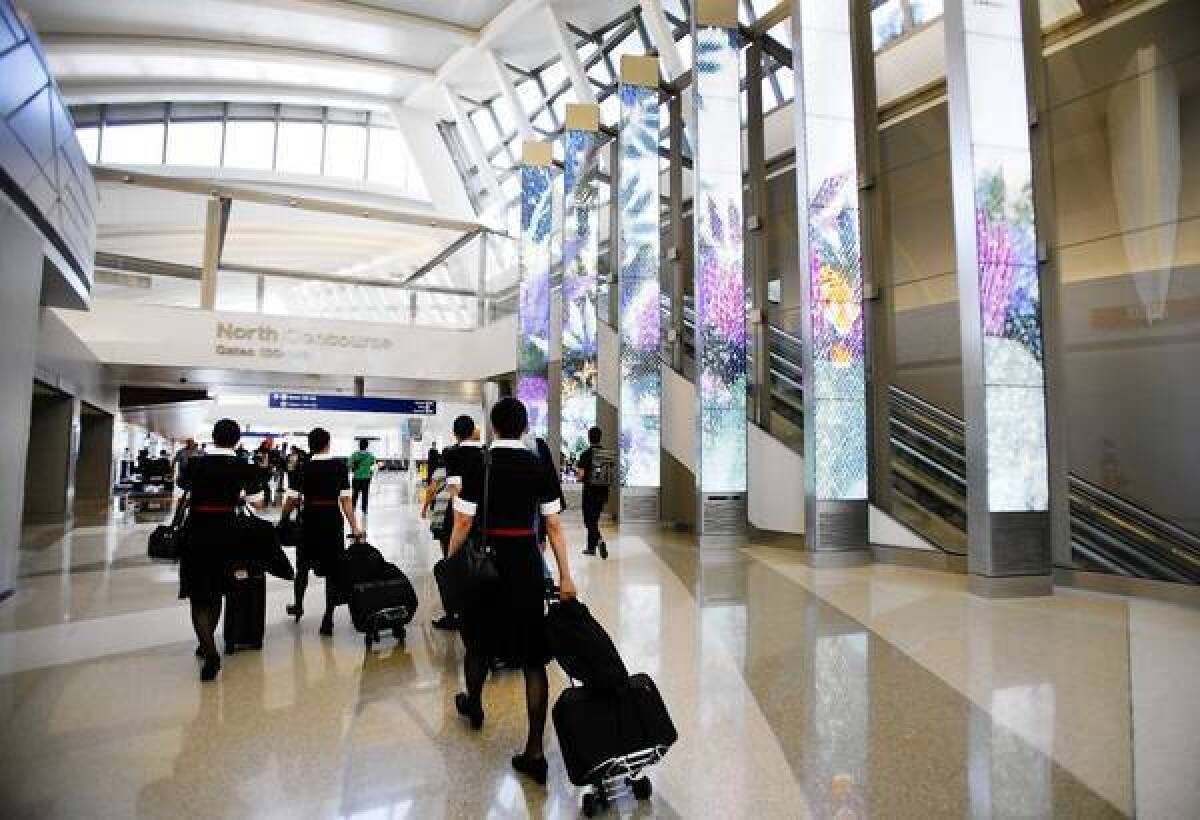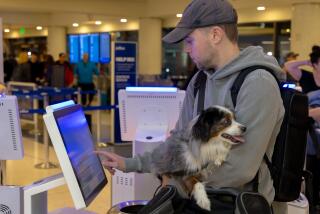Airports ranked by healthy meal choices

- Share via
You have no more excuses for eating junk food while traveling.
At the nation’s busiest airports, 76% of restaurants offer at least one healthy entree, according to a survey by a panel of doctors. That’s a big improvement from 2001, when only 57% of airports offered at least one healthy dish.
In a ranking of 18 airports by the nonprofit Physicians Committee for Responsible Medicine, Denver International Airport came out on top, with 86% of its restaurants offering healthy dishes such as wraps, barley burgers, vegetable soup, Roma tomato paninis and spinach salads.
Los Angeles International Airport tied for third place with 83%, an increase of 7 percentage points from 2012, when the airport ranked 10th, the study found.
But LAX may move up the ranking because the study was completed before the airport expanded the Tom Bradley International Terminal in September with 31 new eateries.
“The emphasis on fresh, healthy fare is a major highlight of Tom Bradley’s new dining program,” said Eileen Hanson, a spokeswoman for Westfield Inc., the concessions developer at the terminal. “Today’s travelers, many of whom adhere to special dietary considerations, expect the same quality food that they’re able to get outside the airport.”
But LAX is not all sprouts and tofu. You can still stuff yourself at three McDonald’s, two Panda Express and two Burger King eateries.
For the third year in a row, Hartsfield-Jackson Atlanta International Airport, the world’s busiest airport, was at the bottom of the healthy food ranking with a score of 51%.
Americans using fewer vacation days
The economy may be improving, but Americans are spending less time relaxing.
The average American got 14 days of vacation over the last year but took only 10 days away from work, leaving twice as many days of unused vacation compared with the previous year, according to a study conducted by Harris Interactive on behalf of the travel website Expedia.
But when it comes to vacationing, Americans still take more time off than their Japanese counterparts, who got an average of 18 vacation days but used only seven, the study found. South Koreans took seven out of 10 vacation days they were offered.
The world leaders in vacationing are the French, who took all of the 30 days available to them in the last year. And yet 90% of employed French adults either strongly or somewhat agreed with the statement “I feel vacation deprived,” according to the study of 8,535 working adults in 24 countries.
For those American who are not using all their vacation days, the most common reason (cited by 27% of those surveyed) is that they want to stockpile the days for future vacations.
Firm designs seats for large fliers
A British company believes it has solved the common problem that comes up when extra stout passengers try to squeeze into a seat made for an average flier.
The answer is a seat called Morph, which can be widened or reduced in width, depending on the space the passengers need. Here’s how it works: A row of three seats are built as one, like a sofa, with armrest dividers that can be moved laterally to increase the width of one or two seats while reducing the space of the other.
One of the advantages, according to the design company Seymourpowell, is that airlines can charge big passengers more for the extra space, while other fliers, such as children, can pay less to sit in a smaller seat.
A drawback: The seats don’t recline.
Don’t expect to see the seat on your next flight. So far, Seymourpowell is putting out the seat as a concept for the industry to consider.
“We wanted to challenge the current economy seating structure,” said Erin Smith, a spokeswoman for the company. “We wanted to show that it doesn’t all need to be about ramming in more and more people into the economy class, rather we can make it about choice and develop architecture that blurs the boundaries between classes on a seat-by-seat basis.”
More to Read
Inside the business of entertainment
The Wide Shot brings you news, analysis and insights on everything from streaming wars to production — and what it all means for the future.
You may occasionally receive promotional content from the Los Angeles Times.










